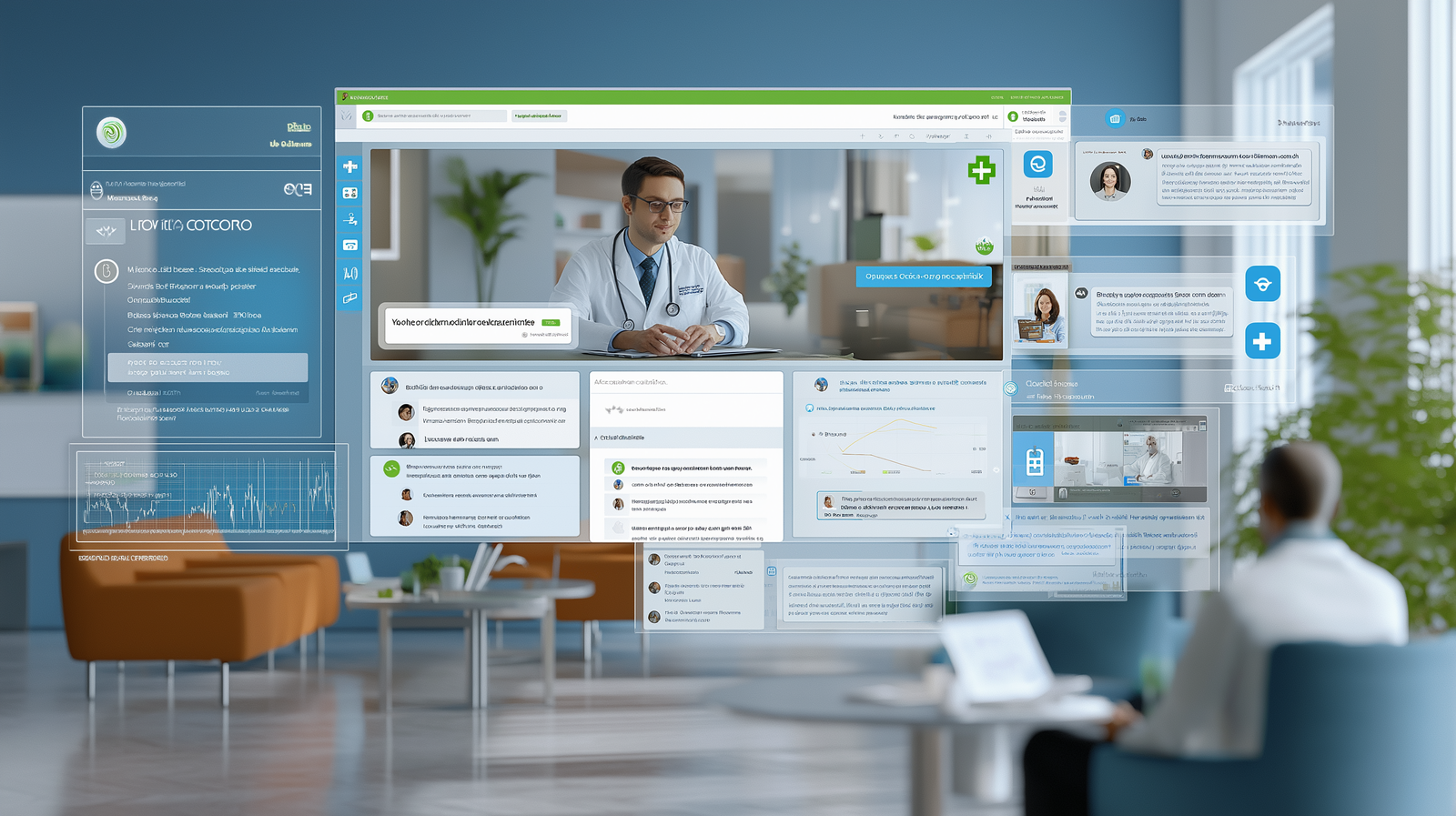User Experience is the umbrella that encompasses all things related to the interaction of a brand (in our case, digitally) with its users. Almost every criticism of an app relates to a UX issue: “The application is too slow.” “I don’t understand where to click.” “I can’t read. The font is too small.” “I don’t like the way this page looks.” “I’m always on my phone, but the site isn’t responsive”… the list goes on.
When approached the right way, UX is a philosophy that, in practice, pins all decisions about the products and services being created to users’ needs. This requires knowledge about who our users are and what they need. Answering those questions is much easier said than done because our assumptions and biases often impede the quest to uncover those answers. The good news is that user research can help put our assumptions and biases aside and provide concrete, data-driven answers to these two difficult questions.
Below, I will explain the value of user research and how it aids in defining who our uses are and what they need. I will also explain how user research affects three very important aspects of business:
- Increasing sales (or any other key metric your company associates with success)
- Decreasing costs
- Creating more satisfied customers and loyal brand advocates
To illustrate, let’s say you’re buying a gift for my mom.
The Task
You and your team are great gift developers; you can make any gift. If you provide my mother, Meredith, with a gift she really enjoys, her social media savvy-ness could provide enough free marketing to make your company the top gift company in the industry. Provide something she doesn’t like, and business could take a turn for the worst. You are tasked to tell the team what gift to make for my mom, whom you don’t know very well, except that she is in her 60s. The gift should be delivered in a week.
Scenario 1: No User Research
A perceived lack of time, an appeal for secrecy, or perhaps a thought you and your team already know what my mom wants creates a situation where she is not asked what she wants. Instead, a meeting with the stakeholders takes place to discuss the scenario. The stakeholders in this case are Karen (her sister), Denise (her best friend of 20 years), and Phil (her husband of 35 years).
Karen insists a dog is the ideal gift. “Meredith has loved dogs her whole life. Now that the kids are out of the house, I think she would love it.” Denise counters with a nice painting of the beach. “If I know Meredith, she loves the beach, I think we should bring the beach to her.” Phil claims, “Meredith has always enjoyed a nice piece of jewelry. I think a necklace is the winning ticket.”
The meeting ends; the stakeholders did not agree on which gift would be best. The gift team likes all the ideas, and now wants to make them all. To make that possible, the team takes an entire day to re-plan and shuffle resources. That new plan is presented to the stakeholders the following day.
During the meeting, Phil decides giving all three gifts is unnecessary, and “jewelry is what Meredith will want.” Although not everyone agrees, he is the husband of 35 years. Jewelry it is. With time in a crunch, the gift team now has to push hard to get the jewelry made by the deadline.
A week passes and a necklace is presented to my mom. She thinks it’s pretty, but not really anything she’d wear. Not to mention, one piece is slightly misshapen. Overall, she is not that pleased.
How does this relate to software development?
In software development, we often see similar situations occur when the stakeholders’ are hesitant to make an upfront investment in user research because they underestimate the value of it and overestimate how much they understand their users. The short-term and long-term costs of proceeding without user research are not realized by these companies until it’s too late.
Increase in costs
- A meeting occurs with primary stakeholders to come up with an idea of what to create. Subjective “I think” vs. “I think” statements are debated back and forth ending in long unproductive meeting. The meeting doesn’t add any value, however, it does increase costs before any design and development work has even begun.
- The meeting creates a list of non-data, intuition-driven ideas on what to create, bloating the backlog of products and features. The planning that ensues to prepare for the creation of these new items increases the costs before any design and development work has even begun. Hopefully, not everything gets developed, as the sunk costs that come attached to a product that has not been vetted and misses the target can be huge.
- The most senior, or highest paid, makes an executive decision on what to create. “Why” the product is being created is now answered with “because the boss said so.” With the boss as the “gatekeeper” of decision-making, decision-making cannot scale and approval bottlenecks occur.Design or development that is blocked waiting on approvals increases the cost while adding no value.
Decrease in sales
- No empathy is built for the users and their needs are unclear. The new product is tailored to appeal to the boss and not the user. The product is delivered and is undesirable. Sales decrease along with customer satisfaction and brand perception. The time and money spent on this product is a sunk cost. What’s next is the cost of creating something new or making significant changes to the current product.
Scenario 2: User Research – Interview
The gift team decides to ask my mom a few questions prior to choosing what gift to make. They ask questions like: “What are your top 3 interests?” “What is one thing you really need/want?” These questions prompt responses like: “Oh, I love to bake and read. It feels like I never have time to, though.” “I really need a vacation or a massage!”
With this information, the gift team was able to meet with the stakeholders, and explain to Karen, Denise, and Phil that what my mom really wants
is a vacation. “She said it, how can you argue with that,” they say. Everyone is on board, and the gift making can begin.
The team puts together a nice a vacation package including some spa days.
A week passes and the gift is presented to my mom. She is excited to get out of the house for some R&R. “Pretty good gift,” she says. After vacation, however, she still doesn’t have time to bake, and soon after that, she needs another vacation.
How does this relate to software development?
This often occurs in software development when stakeholders don’t fully understand the value of user research – they haphazardly resort to a formal survey approach that results only in surface-level insights. This half-baked approach can help eliminate some of the costs that might have been incurred with no user research, but it accumulates opportunity costs when it comes to the long-term viability of the product and its benefits to the users and the company.
Decrease in costs
- A meeting occurs with primary stakeholders to share research findings. The stakeholders have less to debate since user feedback drives the conversation. The meeting is valuable as a product decision is made, allowing for design and development to begin. Time is well utilized.
- The backlog of products and features is lean and backed with user feedback. This allows the design and development team to spend time working on quality not quantity. Maintenance costs decrease as the amount of re-work is decreased and the code produced is less buggy.
- Product decisions are backed by user feedback and conclusions become more concrete, objective and impeachable. The entire team collectively agrees on the product to be created and has a common understanding of why. This allows for the decision-making process to scale, relieving the approval bottleneck, and keeping design and development from being blocked.
Increase in sales
- Although empathy was not fully developed, the team still gains insight as to what the users want. A product was developed that satisfies users’ short-term desires, but not long-term needs. This product meets users’ expectations and short-term sales are fairly good. Customer satisfaction and loyalty doesn’t necessarily increase or decrease.
Scenario 3: User Research – Interview & Contextual Inquiry
As a team, you start to talk with my mom and ask questions like: “What’s your typical day like?” “What are some of your favorite activities and what do you enjoy about them?” These open-ended questions get her sharing stories and personal quirks allowing the team to understand her day, what she does, and why she does it.
You also spend the day with her, observing her daily routines and habits. One thing in particular stands out to you. She sweeps and mops the floor daily. During which, you notice she slightly grimaces while holding her back.
After reviewing the interview again and the notes from the day you spent with her, the team maps out “a day in the life of Meredith.” She spends much of her morning stretching to loosen her back. In the afternoon, she cleans. “I don’t know what it is, having clean floors keeps me sane,” she said.
You have uncovered that my mother’s daily goal is to keep the house clean because, for her, a clean house equates to a clear and happy mind. This creates a daily habit of cleaning, even if it is detrimental to her back. Now that you understand her goals and behaviors through this research, presenting your findings to the team and stakeholders is easy. Everyone understands what my mom does daily and why she does it; empathy is built.
“We always knew Meredith had a bad back, but we are amazed about how much she cleans! We need to help her out with this cleaning stuff,” they shout! “How might we keep Meredith’s house clean without her cleaning,” becomes the problem statement to solve. The meeting is now more of workshop; ideas are flowing. The gift team and stakeholders agree: An Automated Floor Cleaner.
After a day of research, my mom’s goals, behaviors, and unarticulated needs were uncovered and understood, a targeted problem statement was determined, a focused ideation session occurred to solve that problem, and the gift team can charge full steam ahead creating a product they know will better my mother’s life.
A week passes and the gift is presented. She is surprised, also not exactly sure how it works. Good thing the gift team thought that would happen beforehand, so they made illustrated, easy-to-understand instructions.
A month later, my mom can’t stop talking about the “magic floor cleaner”. It saves her time, the floors are in great shape, and the best part of it all, her back feels better! She adores your gift and your team.
How does this relate to software development?
When stakeholders are willing to invest in thorough user research prior to the development of their desired software product, the results are radically improved – both in the short term and the long term. Not only do they forego many short-term development costs, but they realize long-term benefits of the application for their business by creating satisfied customers and brand advocates.
Decrease in costs
- A meeting occurs with primary stakeholders to share research findings. The stakeholders galvanize behind the empathy developed for their users. Not only is a product decision made, an innovative product decision is made, and design and development work can begin.
- The backlog of products and features is lean and backed with user research. This allows the design and development team to spend time working on quality not quantity. Maintenance costs decrease as the amount of re-work is decreased and the code produced is less buggy.
- Product decisions are backed by user research and conclusions become more concrete, objective and impeachable. The entire team collectively determines the best product idea and feels a sense of ownership. The goal of the product is understood by the entire team, allowing for the decision-making process to scale. This relieves approval bottlenecks and keeps design and development from being blocked.
Increase in sales
- Empathy for the user is gained through user research and used to determine a product that will enhance the user’s life. The product exceeds the users’ expectations and increases their brand satisfaction and loyalty, leading to increased sales. Impressed users turn into brand ambassadors and advocate for the product creating free marketing and more sales over time.
The Value of User Research
Ultimately, the user has the final say on whether a product is good, not the company who created it; therefore, understanding who the users are, uncovering what they need, and using that information to influence the product is not just a good idea, it’s imperative to the success of your product. Whether it’s my mom, a group of teenagers, or a million shoppers on an ecommerce site, user research will assist in understanding their goals, behaviors, and unarticulated needs allowing you to provide “the perfect gift.”
Productive Edge has a passion for performing user research to uncover users’ underlying needs and pain points. Through user interviews, contextual inquiry, user testing, and analytics, we can deliver artifacts like personas, journey maps, and flow charts – backed by data – to aim product creation in the right direction. The tangible value of this will shine through in the form of decreased costs, increased sales and more satisfied customers.
For a complimentary UX consultation, contact Productive Edge.




